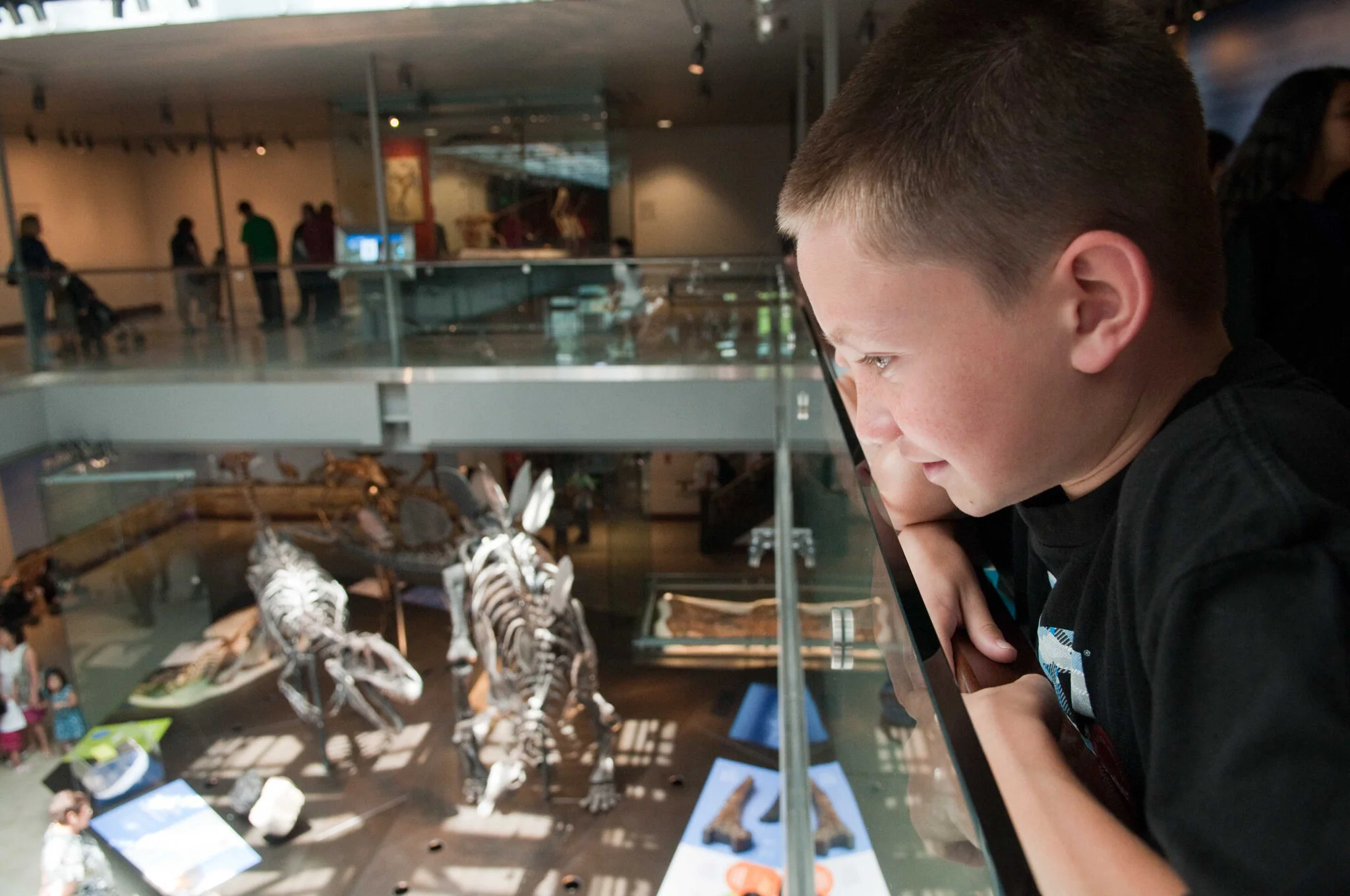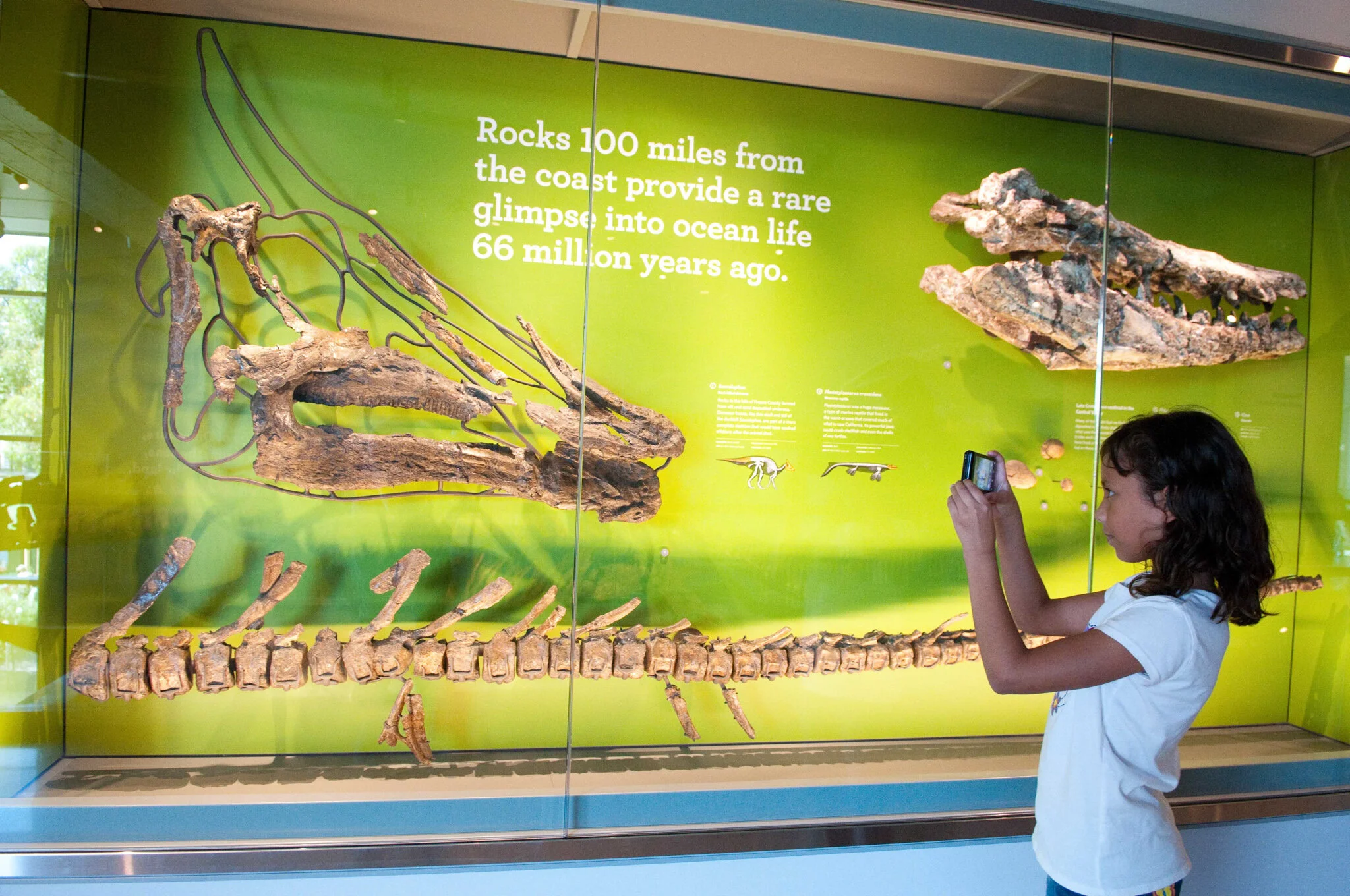

Details
Winner of an American Alliance of Museum’s Excellence in Exhibition Award, the Natural History Museum’s Dinosaur Hall is recognized as one of the premier dinosaur exhibitions in the United States. The permanent 14,000 square foot exhibition features over 300 fossils and 20 complete mounts of dinosaurs and sea creatures. Marrying complex design and technology with the latest in scientific research, the Dinosaur Hall represents a new paradigm in natural history museums.
The Dinosaur Hall is organized around the key questions — or mysteries that drive scientific research and fascinate the public: What is a dinosaur? What was their world like? How did they live, grow and behave? And finally, what happened to them?
As Senior Project Manager and Exhibition Developer, I oversaw the content development, media development, interactive development, design, fabrication and installation of the Dinosaur Hall. The project team included content developers, educators, paleontologists, writers, exhibit technicians and illustrators in addition to numerous construction and technical subcontractors.
Acknowledgements
Evidence Design, Kim Baer Design Associates, Museum Director Jane Pisano, VP Karen Wise, Dan Keeffe, Tiffany Reyman, Jessica Lally, Writers Michael Rigsby and Kathy Tally Jones, Chris Weisbart, Picnic Design, Unified Field Media, Phil Frayley, RCI, Stephanie Abramowicz, Julius Csotonyi, William Maple Design, Cordell Construction, VP of Paleontology Luis Chiappe, Doyle Trankina, Paige Johnson, NHM Exhibits Team, Matt Construction, JAMA Engineers, Severud Engineering, Focus Lighting, Electrosonic, Lexington Design and Fabrication and Ely Mountmakers










Words
“Proceed through this hall, and the [inquiry] approach works its wiles: we do not passively peer through glass at formal displays or gaze upward at enormous mounts. Because of the videos, the suggestive text, the display of paleontologists’ tools, the reminders of changing interpretations, and the emphasis on new research, dinosaurs here become part of a contemporary evolutionary process of understanding”
– Ed Rothstein, New York Times